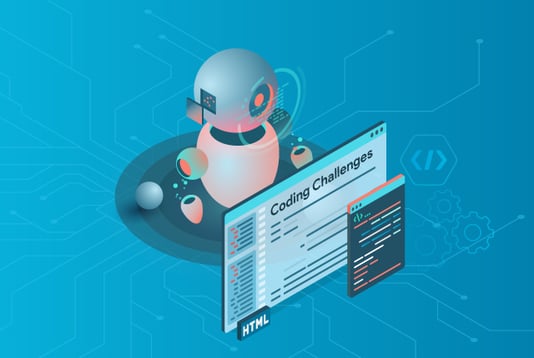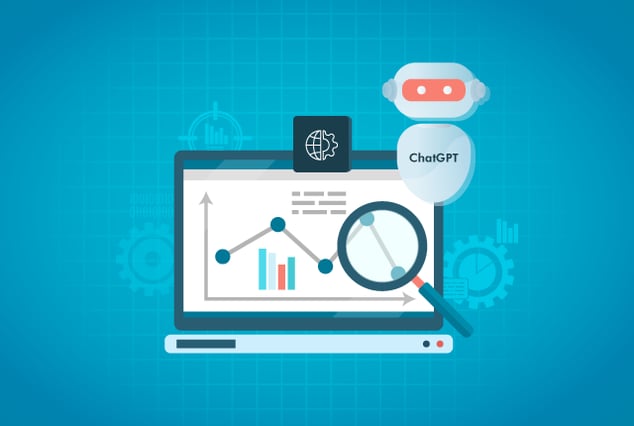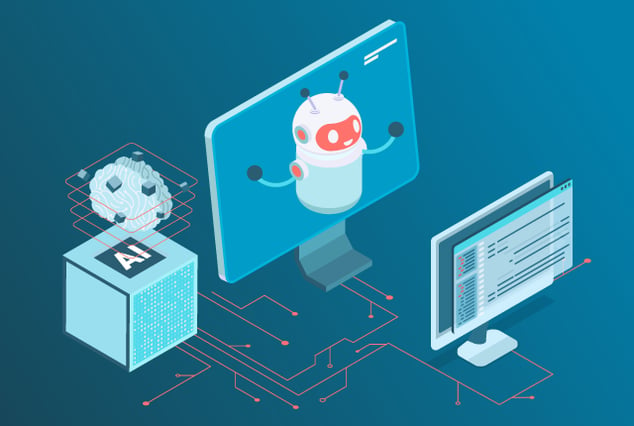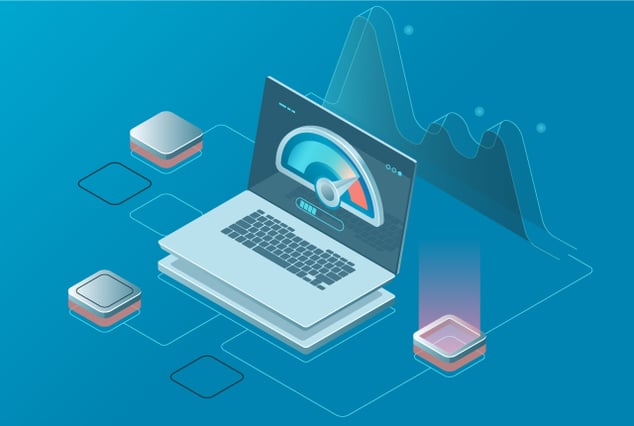
Traditional coding development methods have limitations and challenges, as does coding with ChatGPT and that will be no different with ChatGPT-assisted coding. In this blog, we explore ChatGPT's immense promise, its ability to overcome coding constraints, how it enables developers to tap into its problem-solving potential, and its limitations.
Limitations of ChatGPT
Can ChatGPT solve problems? Yes, while ChatGPT is a powerful coding tool, it does have some limitations that need to be aware of to be addressed:
- Limited Use Case Coverage: ChatGPT has limitations in addressing highly specialized or niche use cases, as its training may not encompass the entire spectrum of specific requirements.
- Reliance on Natural Language Input: ChatGPT real time data primarily operates based on textual prompts, introducing the possibility of prompts that can be ambiguous or misinterpreted, which can impact the accuracy of code generation.
- Absence of Best Practices and Conventions: While ChatGPT optimizing aims to generate functional code, it does not always consistently adhere to industry best practices, coding conventions, or established design patterns, potentially affecting code quality and maintainability.
- Decision-making Challenges: ChatGPT's ability to make complex decisions or evaluate trade-offs may be constrained, particularly in scenarios without explicit instructions or constraints, necessitating human intervention.
- Code Reusability Limitations: The generated code may not always exhibit a high degree of reusability or modularity, potentially leading to code duplication or coupling, which can impact maintainability and scalability.
- Contextual Understanding Constraints: ChatGPT's contextual understanding relies primarily on the provided prompt, and it may not fully grasp the broader project or system context, making it challenging to generate code that seamlessly integrates with existing codebases.
- Insufficient Error Handling Mechanisms: ChatGPT may not generate code with robust error handling mechanisms, which can result in vulnerabilities or unexpected behavior when dealing with edge cases or exceptional scenarios.
- Lack of Domain-specific Knowledge: ChatGPT's knowledge is limited to its training data and may lack expertise in specific domains, potentially resulting in inaccuracies or limited understanding of industry-specific contexts.
- Code Optimization and Efficiency Considerations: While ChatGPT can generate functional code, it may not prioritize producing highly optimized or efficient solutions, potentially impacting performance or resource usage.
- Limited Real-time ChatGPT Information Access: ChatGPT operates based on its pre-training knowledge and lacks ChatGPT real-time information access or the ability to interact with live systems, which may restrict its ability to provide up-to-date or dynamic code solutions.
How To Unlock its Potential?
-
Ensure All Use Cases Are Covered
- Conduct thorough requirement gathering and analysis to identify and understand all possible use cases.
- Create comprehensive test cases and scenarios to validate the solution's functionality.
- Continuously engage with users and stakeholders to gather feedback and refine the use cases over time.
-
Self-improvement Approach
- Regularly update and enhance the underlying language model to improve its performance and capabilities.
- Utilize techniques such as reinforcement learning to allow the model to learn from user interactions and improve its responses.
- Encourage users to provide feedback and corrections to help train the model to generate better outputs.
-
Clear and Concise Prompts While Maintaining Token Limits
- Clearly articulate the problem or question in the prompt to provide sufficient context for the model.
- Optimize the prompt to stay within the token limits, prioritizing the most important information.
- Use techniques like paraphrasing or providing additional information in subsequent prompts to overcome token limitations.
-
Supply Guidelines and Best Practices
- Provide documentation or guidelines on how to use the model effectively.
- Share best practices across your teams for structuring prompts, formatting data, or handling specific use cases.
- Include examples and tutorials to demonstrate the recommended approaches.
-
Supply Utility Codes for Code Reusability
- Provide pre-built utility functions or code snippets that users can easily integrate into their projects.
- Encourage modular code design and provide libraries or packages to facilitate code reuse.
- Offer documentation and usage examples for the utility code to help users understand and leverage its capabilities.
- Implement security measures to protect sensitive business logic and data, ensuring the integrity of utility code in business applications.
-
Review and Validate the Generated Code
- Implement a review process to ensure the generated code meets quality standards and adheres to best practices.
- Use automated testing tools and techniques to validate the correctness and reliability of the generated code.
- Encourage user feedback and engagement to identify and address any issues or potential improvements.
-
Perform Code Optimizations After Generating
- Analyze the generated code to identify potential performance bottlenecks or areas for optimization.
- Apply standard code optimization techniques, such as algorithmic improvements or efficient data structures.
- Guide performance optimization strategies to users to help them improve the generated code.
-
Seek Human Expertise
- Engage domain experts or experienced developers to review and validate the generated code for correctness, security, and efficiency.
- Encourage collaboration between users and experts to ensure the best possible outcomes.
- Leverage the expertise of the community by fostering a platform for sharing knowledge and experiences.
By implementing these approaches, you can mitigate challenges, unlock the potential of the system, and provide a more robust and valuable experience for users.
How QASource Can Help?
We are here to help you overcome the limitations of ChatGPT and maximize its potential. Here's how we can assist you:
-
Collaborate With You
We work closely with you and your development team to identify diverse use cases for training and testing ChatGPT. By understanding your specific requirements, we expand the coverage of ChatGPT and ensure it meets your unique needs.
-
Perform Rigorous Testing and Validation
Our experienced team conducts thorough testing and validation of the generated code. We identify any inconsistencies or errors, ensuring that the code produced by ChatGPT is accurate, reliable, and meets your quality standards.
-
Implement Coding Guidelines and Best Practices
To align the generated code with industry standards, we provide prompts that include coding guidelines, best practices, and conventions. This ensures that the code adheres to established practices, enhancing its maintainability and readability.
-
Define and Test Error Handling Mechanisms
We help you define and test error handling mechanisms within the generated code. By identifying and addressing potential errors and exceptions, we ensure that the code handles them effectively, improving its robustness and reliability.
-
Optimize Code Efficiency
Our team brings expertise in code optimization and efficiency. We optimize the generated code for improved performance and resource utilization, enabling you to deliver high-performing software solutions.
-
Provide Domain-Specific Knowledge and Expertise
With our deep industry knowledge, we contribute domain-specific expertise to refine the generated code. We understand your unique requirements and provide insights that enhance decision-making and ensure the generated code aligns seamlessly with your specific domain.
-
Strategies for Appropriate Code Generation
We apply cutting-edge strategies to ensure ChatGPT generates code that adheres to coding standards, project requirements, and application context. This results in high-quality code that meets your coding and project standards.
-
Preprocessing Application Data
Our expertise in data preprocessing allows us to optimize your application data for ChatGPT. We clean, normalize, and transform the data, ensuring it is well-structured and enhances the accuracy and relevance of ChatGPT's responses.
-
AI-Enabled Development Processes
We help you seamlessly integrate ChatGPT into your development workflow. We establish streamlined processes that harness the power of AI, transforming your development practices. ChatGPT becomes an integral part of code reviews, testing procedures, and version control systems, enhancing efficiency and productivity.
By leveraging our comprehensive testing, validation, and collaboration, you can overcome the limitations of ChatGPT. With our assistance, you can unlock the full potential of ChatGPT, revolutionizing code generation and problem-solving in your software development projects.
Conclusion
ChatGPT offers immense potential for unlocking problem-solving capabilities in code generation. However, it is essential to acknowledge and address the limitations associated with varying use case coverage, decision-making, code reusability, context understanding, and other challenges. Through strategic approaches and collaboration with industry experts like QASource, these challenges can be overcome. Gain deeper insights and unlock the full potential of intelligent code generation by downloading our comprehensive ChatGPT report. Start harnessing the power of AI today!



